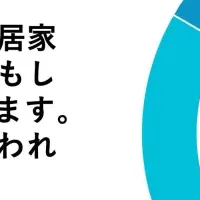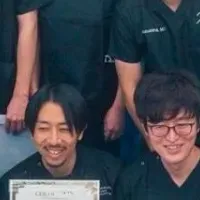
#South Korea
#Pusan National University
#Busan
#Hypergraph Interaction Transformer
#Gene Target Discovery
Pusan National University Unveils Cutting-Edge AI Model for Therapeutic Gene Target Discovery
In the realm of personalized medicine, the identification of therapeutic gene targets plays a pivotal role in developing effective, tailored treatments for patients. However, traditional methods of discovering these targets are notoriously slow and expensive, creating a bottleneck in the progression of medical advancements. Recognizing this challenge, researchers from Pusan National University in South Korea have made groundbreaking strides in this field by developing a novel artificial intelligence model known as the Hypergraph Interaction Transformer (HIT).
The HIT model represents an innovative leap in AI technology, specifically designed to facilitate the accurate and rapid identification of therapeutic gene targets by leveraging hypergraphs and attention-based learning. Traditional deep learning techniques have shown potential in recognizing biomarker genes but often falter when it comes to the intricate relationships among diseases, genes, and gene ontologies. These complexities necessitate a new approach that the HIT model aims to provide.
Lead by Associate Professor Giltae Song from the School of Computer Science and Engineering at Pusan National University, the team has harnessed hypergraph modeling, which permits connections between various nodes through single hyperedges. Unlike standard graphs that limit relationships to pairwise interactions, hypergraphs are capable of representing multiple entities simultaneously, capturing the multifaceted relationships inherent in biological data. This model allows researchers to construct gene and disease hypergraphs from extensive biological datasets, establishing connections between genes, diseases, and broader ontological categories.
Once these hypergraphs are in place, HIT utilizes a pair of specialized encoders employing attention mechanisms. The gene hypergraph encoder processes the constructed hypergraph to produce gene embeddings that reflect the relationships between genes and their corresponding gene ontologies. These embeddings serve as the foundational representations for the genes in the disease hypergraph. Subsequently, the disease hypergraph encoder refines these gene embeddings and concurrently generates new embeddings for diseases. This dual analysis culminates in an overarching classification where each gene can be classified as a therapeutic target, a biomarker, or unrelated to the specified disease.
The efficacy of HIT is underscored by its remarkable performance across multiple evaluation metrics, establishing itself as a superior alternative to existing models. Significantly, HIT reduces the time frame of training and inference to just 1 hour and 40 minutes on a single GPU, a striking contrast to the weeks required by traditional methodologies. The HIT model’s practical application was further validated through a heart failure case study, efficiently identifying all known therapeutic targets for that condition.
A critical advantage of the HIT model is its explainability, fostering greater trust among researchers and medical practitioners in its outputs. As Prof. Song notes, the model has the potential to accelerate the identification of new therapeutic gene targets significantly, thereby enhancing our understanding of disease mechanisms. This advancement could greatly enrich personalized medicine, enabling treatments that align with the unique genetic makeup of individual patients and facilitating earlier disease detection in clinical environments.
The rapid and precise identification of therapeutic gene targets heralds a new frontier in drug development, optimizing the delivery of promising therapies to patients. With the HIT model, there exists a tangible opportunity to streamline the drug discovery pipeline while simultaneously elevating the quality of personalized healthcare.
The original study detailing these findings, titled "Therapeutic gene target prediction using novel deep hypergraph representation learning," was published in the journal Briefings in Bioinformatics. Should this innovative model come into widespread use, it could indeed transform contemporary approaches to genetic research and therapeutic development.
The HIT model represents an innovative leap in AI technology, specifically designed to facilitate the accurate and rapid identification of therapeutic gene targets by leveraging hypergraphs and attention-based learning. Traditional deep learning techniques have shown potential in recognizing biomarker genes but often falter when it comes to the intricate relationships among diseases, genes, and gene ontologies. These complexities necessitate a new approach that the HIT model aims to provide.
Lead by Associate Professor Giltae Song from the School of Computer Science and Engineering at Pusan National University, the team has harnessed hypergraph modeling, which permits connections between various nodes through single hyperedges. Unlike standard graphs that limit relationships to pairwise interactions, hypergraphs are capable of representing multiple entities simultaneously, capturing the multifaceted relationships inherent in biological data. This model allows researchers to construct gene and disease hypergraphs from extensive biological datasets, establishing connections between genes, diseases, and broader ontological categories.
Once these hypergraphs are in place, HIT utilizes a pair of specialized encoders employing attention mechanisms. The gene hypergraph encoder processes the constructed hypergraph to produce gene embeddings that reflect the relationships between genes and their corresponding gene ontologies. These embeddings serve as the foundational representations for the genes in the disease hypergraph. Subsequently, the disease hypergraph encoder refines these gene embeddings and concurrently generates new embeddings for diseases. This dual analysis culminates in an overarching classification where each gene can be classified as a therapeutic target, a biomarker, or unrelated to the specified disease.
The efficacy of HIT is underscored by its remarkable performance across multiple evaluation metrics, establishing itself as a superior alternative to existing models. Significantly, HIT reduces the time frame of training and inference to just 1 hour and 40 minutes on a single GPU, a striking contrast to the weeks required by traditional methodologies. The HIT model’s practical application was further validated through a heart failure case study, efficiently identifying all known therapeutic targets for that condition.
A critical advantage of the HIT model is its explainability, fostering greater trust among researchers and medical practitioners in its outputs. As Prof. Song notes, the model has the potential to accelerate the identification of new therapeutic gene targets significantly, thereby enhancing our understanding of disease mechanisms. This advancement could greatly enrich personalized medicine, enabling treatments that align with the unique genetic makeup of individual patients and facilitating earlier disease detection in clinical environments.
The rapid and precise identification of therapeutic gene targets heralds a new frontier in drug development, optimizing the delivery of promising therapies to patients. With the HIT model, there exists a tangible opportunity to streamline the drug discovery pipeline while simultaneously elevating the quality of personalized healthcare.
The original study detailing these findings, titled "Therapeutic gene target prediction using novel deep hypergraph representation learning," was published in the journal Briefings in Bioinformatics. Should this innovative model come into widespread use, it could indeed transform contemporary approaches to genetic research and therapeutic development.
Reference
- - Title of original paper: Therapeutic gene target prediction using novel deep hypergraph representation learning
- - Journal: Briefings in Bioinformatics
- - DOI: 10.1093/bib/bbaf019
Topics Health)










【About Using Articles】
You can freely use the title and article content by linking to the page where the article is posted.
※ Images cannot be used.
【About Links】
Links are free to use.